This article may contain affiliate links.
Updated: May 28, 2025
I tell you everything there is to see when visiting Gori and Uplistsikhe, Stalin's hometown and the cave city, and how to get there.
This visit is an almost obligatory stop for travelers through Georgia that you can do calmly in just one day, because they are a short distance from Tbilisi.
Generally, it is a combined excursion with the old city of Mtskheta.
Gori hometown of Stalin
The small town of Gori is located northwest of Tbilisi, just 90 km away.
The foundation of the city during the Middle Ages It is attributed to one of the most important kings of Georgia, David the Builder, to settle the Armenian refugees.
However, in archaeological excavations in the territory of Gori, evidence has been found that already It was inhabited in the Bronze Age and its fortress was apparently already in use in the 7th century.
Throughout history it has been occupied by Ottomans, Persians and even during the 2008 war it was taken by the Russians.

But one of the most relevant events that have put this small city on the map was the birth in 1878 of Joseph Vissarionovich Dzhugashvili, known as Joseph Stalin.
👍 Fun fact: The word Stalin derives from Russian and means "made of steel."
What to see in Gori?
1. Stalin Museum
Gori's main tourist attraction is the Stalin Museum, which collect information about the life of this Soviet dictator since his earliest childhood.
From the moment you enter the museum you notice the aim of showing the glorious life of Stalin with a staircase that proudly leads to its sculpture.
But this is not surprising, if we take into account that the museum was built while he was at the head of the Soviet Union.

The tour of the museum goes from his birth to his death, where you will find photos, press clippings, objects from his personal life and clothing.
This museum created quite a bit of controversy and they thought about changing its content, even displaying a banner outside that read the following:
This museum is a falsification of history, it is a typical example of Soviet propaganda that tries to legitimize the bloodiest regime in history.
Finally, the banner was removed and the content remains the same, a place that could be defined as worshiping his person.
In Gori and other places in Georgia you will find many pro-Stalin people with photos of him as if he were a hero.
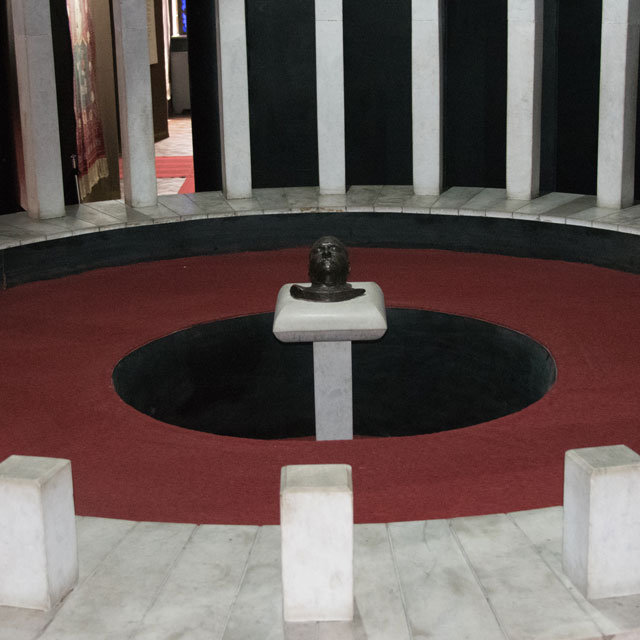
The entrance price to the museum is 15 lari (5.40 euros) with a guide and 10 lari (3.60 euros) without a guide, they are open from 10 a.m. to 5 p.m. every day.
I have to warn you that if you are not a fan of history (like I am) the museum is pretty boring. Except for the small room next to the stairs with personal objects from the studio where Stalin worked for some years.
If you are interested in entering, I recommend doing it with a guide, unless you can read Russian or Georgian. Because almost everything is in those languages, Information in English is minimal.
2. House of Stalin
Right in front of the museum is the small house where Stalin lived during its first 4 years. Well, actually it's the other way around, the museum was built behind the house.

Originally, the house was next to others of similar construction that collapsed.
The house opened like Stalin memorial museum, when he was still alive, in 1937.
Currently, the house is protected from inclement weather under a built-in roof and If you buy the guided tour of the museum you can go in to see it.
3. Stalin's wagon
Leaving the museum, on the right, is Stalin's wagon.
It is an armored wagon that weighs 83 tons that was used from 1941.
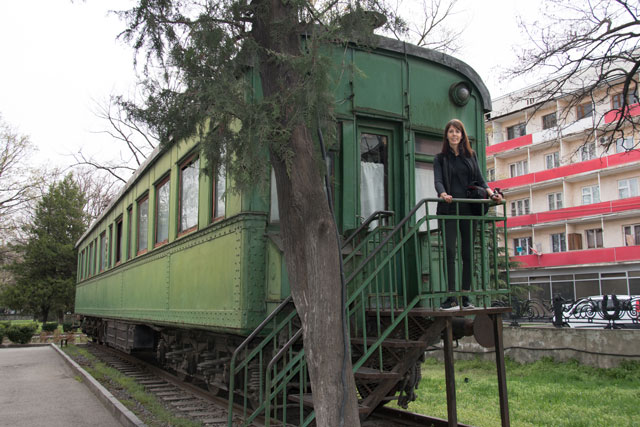
The train was his favorite way to travel and he did it in luxury, at least for the time. In the carriage he had everything he needed on his long journeys through the former USSR
A visit to the carriage is also included in the guided entrance to the museum.
4. Gori Fortress
The Gori fortress is on a hill and can be seen from much of the city.
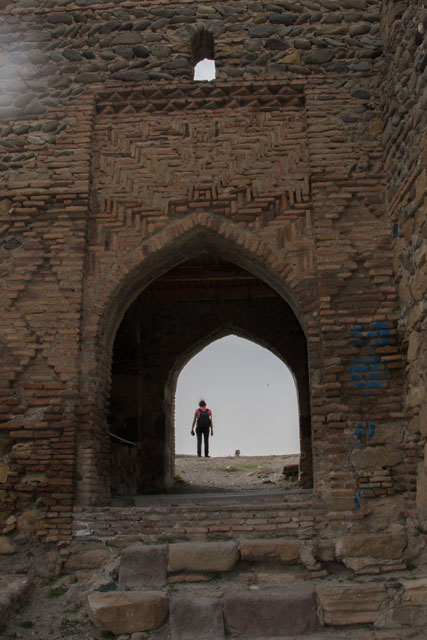
It is a construction from the 7th century that was seriously damaged after the 1920 earthquake.
Today only the stone walls remain, the fortress itself does not offer much more than what is seen from below because there is nothing inside.
The visit is worth it for enjoy the views of Gori including the modern Public Service Hall building, what would become the City Hall in Spain.
5. Memorial to the Georgian Warrior Heroes
At the foot of the fortress there is a very striking monument to Georgian heroes. Is about 8 immense sculptures of Georgian warriors sitting in a circle.
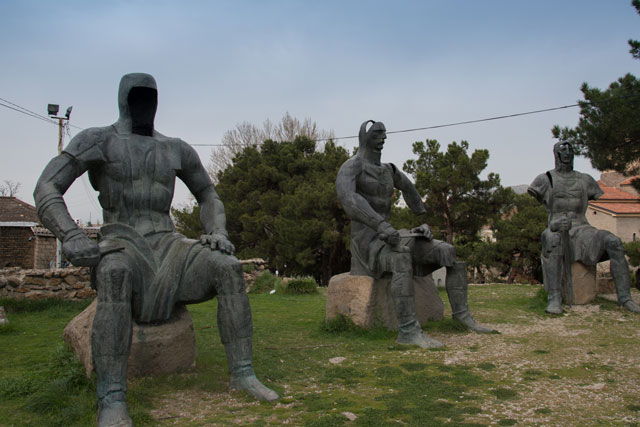
The statues are the work of Georgian sculptor Giorgi Ochiauri created in the 80s. Originally, they were in Vake Park in Tbilisi, around the Tomb of the Unknown Soldier.
In 2009 they moved to Gori to the place where they are currently located.
6. Cathedral of the Virgin Mary
This Catholic church was built in 1806 and functioned as a music school during the Soviet period.
A building that was badly damaged during the 1920 earthquake. Finally, in 1990 it passed into the hands of the Georgian Orthodox Church.
The truth is that it was a little difficult for me to know where the cathedral was exactly, but I leave you a link to Google Maps.

Uplistsikhe Cave City: Georgian Cappadocia
Uplistsikhe means «the strength of the lord» and is a city carved into the rock that served as a settlement from the Iron Age to the Late Middle Ages.

Although these caves They are the most visited in Georgia Due to their proximity to Tbilisi, they are not the only ones, in fact the largest are those in Vardzia, which are next to the Turkish border.
⭐ In this other article you can read more about Guide to visiting Vardzia in Georgia.
These caves are spread over an area of almost 8 hectares and many are interconnected.
It was an enclave that functioned as a political and religious center, housing a population of 20,000 inhabitants.

But from the 4th century with the Christian era it went into decline in front of the city of Mtskheta and then Tbilisi. Later in the 14th century it came to an end during the invasion of the Mongols.
It used to be a larger complex than you can see today, because some caves were lost during the 1920 earthquake.
Since 2007 it is a protected historical monument by UNESCO.
An example of the great history that these caves keep is the great difference between them.
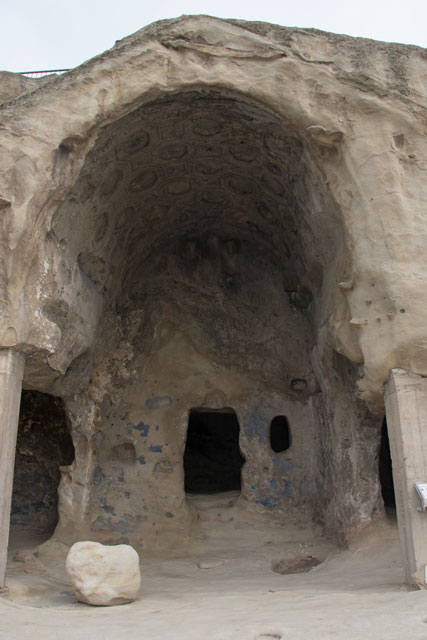
Some are the simplest, with holes dug in the ground, where the fire was placed to warm up or cook depending on the use of the cave.
On the other hand, in others there are engravings on walls and ceilings, such as in the caves where pagan religious rituals were performed or in the reception hall of Queen Tamar or Tamara.
Another curiosity in Uplistsikhe is seeing the vestiges of a town that He was already making wine at that time..

Prices and schedules
Admission costs 15 lari (5.40 euros) and the audio guide is 15 lari, something I recommend so as not to miss the details of the history of this impressive place.
They are open every day, the hours are from 10 a.m. to 5 p.m. in winter and then from 10 a.m. to 6 p.m.
Visiting the caves will take you between 1:30 and 2 hours depending on how long you stop.
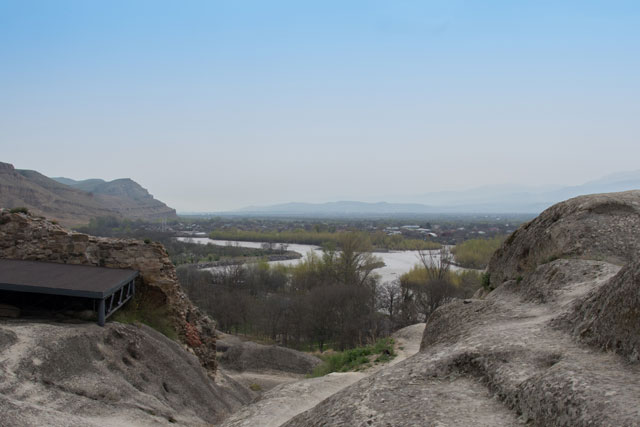
Visit recommendations
- If you travel to Georgia in summer, I recommend visiting them in the morning as soon as they open because then it gets very hot.
- On the other hand, in other seasons it is better to go in the afternoon when there are fewer people, since the tours usually go in the morning.
- Wear comfortable shoes because you have to walk a lot.
- It is not an accessible place or suitable for people with walking problems or small children, there are several stairs and then a lot of going up and down.
- Although if you travel with older children they will have a great time because there are many corners to explore.
Where to eat?
On the road between Gori and Uplistsikhe there are several restaurants, but if you can go eat at Gori you will find better options.
This visit was my first outside of Tbilisi and I was deeply surprised by the difference in prices, everything is incredibly cheap.
At Gori, when you look at a menu it's hard to understand if the prices you're looking at are real or you've missed some details, haha.
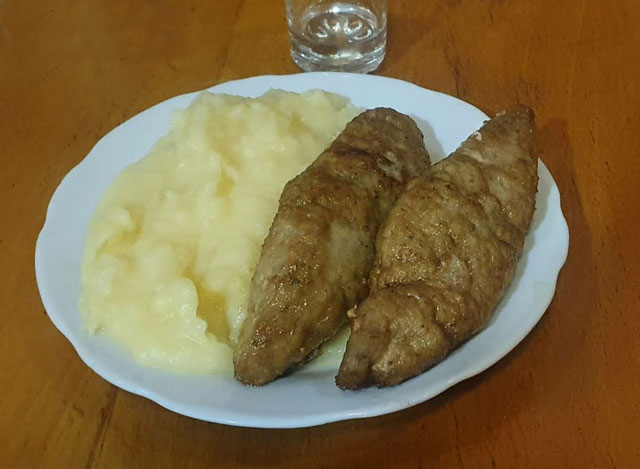
Near the Stalin Museum you will find a Small restaurant with very good homemade Georgian food.
This was a recommendation that Georgian people from Tbilisi gave me, they told me that they eat the «best cutlet with mashed potatoes«.
At that time, I didn't have much experience with the cutlet with mashed potatoes, but to date it is still the best I have tried by far.
Cutlets are a kind of big juicy meatballs and very tasty accompanied by creamy homemade mashed potatoes.
I don't know the name of the restaurant because it is everywhere in Georgian, here is the link google maps.
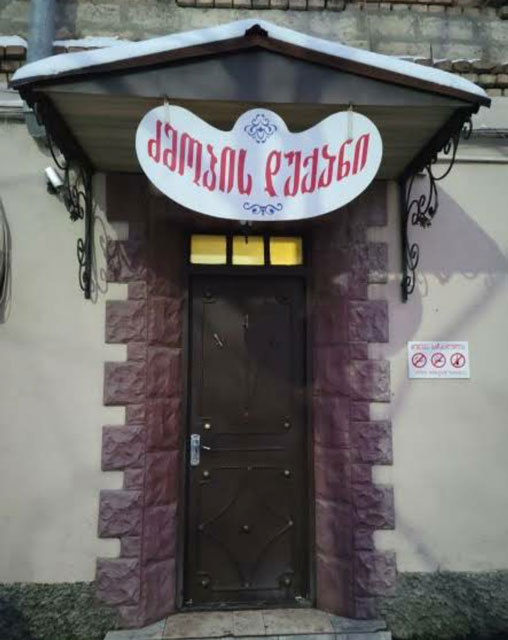
The group of people I was with ordered different dishes and they were all abundant, delicious and very cheap.
In the end we paid 10 lari (3.60 euros) per person, including the drink, although the wine, as they told me, was a bit strong.
How to go to Gori and Uplistsikhe?
1.- Car
The road from Tbilisi to Gori is good and everything is well signposted, including the exit to Uplistsikhe.
To rent a car in Georgia I recommend this search engine that works only with serious Georgian car companies.
This way you ensure that you will have a car in good condition, at a good price and without headaches, because by booking through their website you avoid the language barrier.
2.- Public transport
To visit these two places if you want to do it on your own by public transport you first have to go to Gori.
These are the public transportation options:
- Train: leaves from Square Station, takes 1 hour with several departures in the morning and return in the afternoon. In this other site, You can see all the schedules and buy the ticket or directly at the train station.
- Marshrutka: The minibuses leave from the Didube station in Tbilisi, it costs 2 euros, takes 1:30 hours, there are departures every hour and you do not need to book a ticket.
If you go by train you will have to then take a taxi or walk to the center of Gori.
Once in Gori you can go by taxi to visit the Uplistsikhe caves which are only 10 km away, will cost you about 5 euros and takes less than 15 minutes.
3.- Excursion
The most practical alternative is to go with a excursion to Gori and Uplistsikhe like the one on the link that includes other stops in Mtskheta and Jvari Monastery.
This is a full-day visit with a guide in Spanish and lunch.
More about Georgia
- 24 things to see in Tbilisi
- Visit to Chiatura with its Soviet cable cars
- Best Batumi churches and other religious buildings
- Tips for Traveling to Georgia
- Visit to the David Gareja Monastery

Hi, I’m Andrea, creator and author of Viajeros Activos (Active Travelers). I write about Southeast Asia, the Caucasus, and Europe. I’m a full-time traveler, passionate about good food, and always looking for new adventures.
